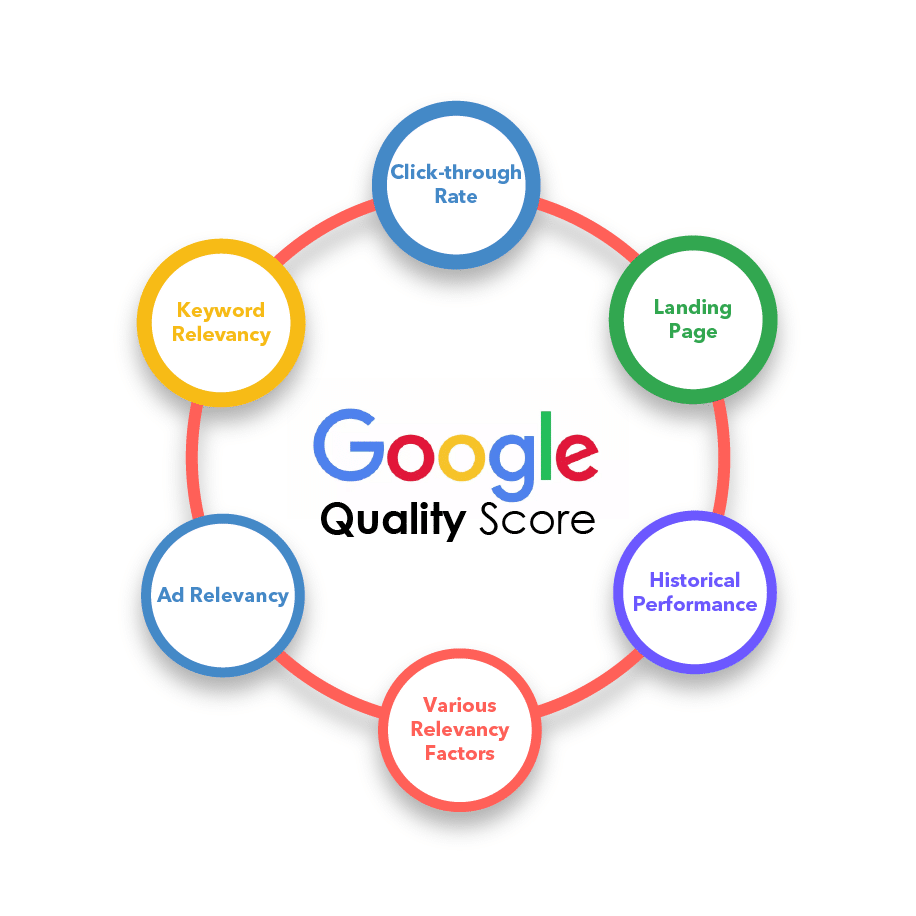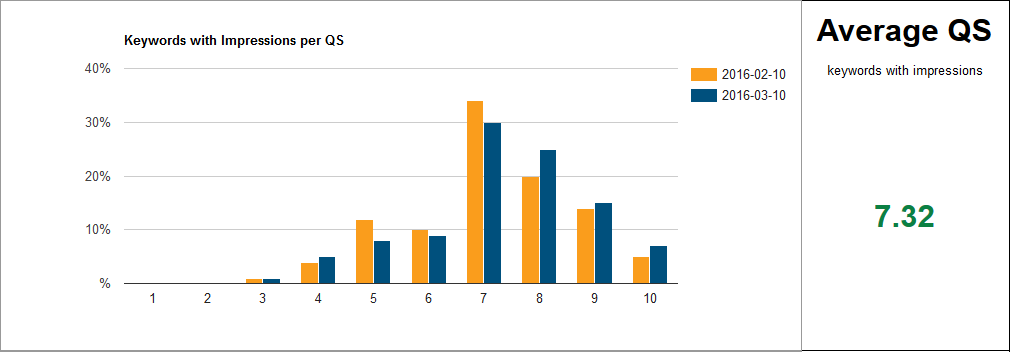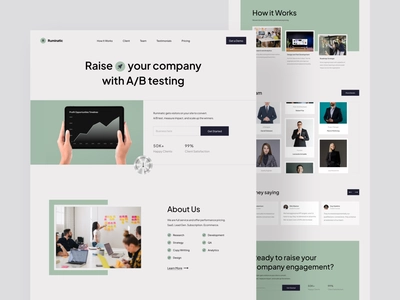How to Improve Your Google Ads Quality Score Quickly

One of the most well-known and effective sponsored (PPC) marketing platforms in the market is Google Ads. Only 350 advertisers were utilizing the service to raise brand recognition at the time of its launch in 2000. More than 2 million businesses use Google Ads today, and it is a multi-billion dollar extension of the business.
Because so many businesses use the advertising service to boost traffic and ROI, the Google Ads market has grown extremely competitive. Less apt to succeed are those who don’t take full advantage of all the resources at their disposal. Your quality score is one factor Google considers when deciding how important you are to the target consumer group. The Google Ad rank is calculated by multiplying the quality score by the Pay-PerClick offer. You should keep in mind this calculation as you progress in your marketing career.
What is a Google Ads Quality Score?
A Google quality score is a composite of variables that describes the general customer relevance of your advertisements. Advertiser ranks are higher for marketers with good quality scores. Paid advertisements are listed on a results page just like organic search traffic. Your score is determined by three major factors:
Expected Clickthrough Rate: The chance that a consumer will see and click on your advertising effort.
Landing Page Experience: How user-friendly and well-organized your site’s design and navigation are, as well as how relevant it is to visitors as a whole.
Ad Relevance: The degree to which your advertisement corresponds to a user’s search purpose. Scores which range from 1 to 10, are intended to assist marketers in refocusing their efforts on enhancing customer effect. By Google, this score is referred to as “an engine warning light for a car.” It alerts you, the motorist, to any issues with your advertisement or website so you can address them.
How to Verify Your Ads Quality Score in Google
Marketers conduct a keyword diagnosis to see the current quality score for their Google advertising. Choose “campaign” and then “keywords” to do this. The keywords on the website should be visible next to a white speech box. Use this to check if there is already a score for the keyword’s anticipated clickthrough rate, ad relevance, and landing page experience.
You may have disabled the quality score sections if there are no white speech boxes visible. Click “campaigns,” and “keywords,” and then choose “modify columns” from the drop-down option to make them active. To view your quality score, landing page experience, ad appropriateness, or anticipated click-through rate, select this option.
Alternatively, you can click “apply” and choose Quality Score (history), Landing Page Experience (history), etc. to examine the history of these QS components.

The Different Types of Quality Scores
There is more to QS ranking than just keywords, as any marketer worth their weight is aware of quality scoring at the keyword level. Here are several distinct quality score types to keep an eye on. These consist of:
I. Keyword Quality Score
The keyword QS is the most reputable and well-known quality number, and it can be viewed from your Google Ads dashboard. Of course, the objective is to rank as near to 10 as you can. It is dependent on how many customers use your keywords in their searches.
In order to correctly score a keyword, Google considers its entire history, which aids in the selection of your keywords. You’ll start to notice a rank develop as the Google user base defines your keyword; its low or high rating will have an effect on how you rank online.

Many contributing variables are used to rank keywords, including:
- Keyword use in connection to content and how it should be done
- Customer interest in your ad’s keywords
- Scores in the past for a phrase
- Expected click-through percentage based on the keyword’s historical usage

II. Landing Page Quality Score
Google has consistently promoted itself as a user-first organization. Because they want to give their searchers high-quality results, website owners must produce high-quality material if they want to rank. The landing page quality number enables you to keep track of how well you adhere to this requirement. The following variables affect your LPQS:
- Content Relevance Navigation Ease
- The openness of laws
- Exclusive material
Your quest for a higher score and ROI leads you back to the keyword QS. The landing page experience is one of the ranking indicators when you linger over that speech box. Despite Google never explicitly mentioning it, it is clear that the landing page is crucial to the success of other parts of your campaign.
Whether it’s official or not, Google ranking your landing page has the advantage of making you, as a marketer or business owner, pay greater attention. As the public face of your business, optimizing your landing page will only enhance the experience of your visitors. As a result, there is an increase in traffic, revenue, and company loyalty.
III. Mobile Quality Score
Any tool that can be used while moving around without an anchor is considered a mobile gadget. The most typical device is a tablet or smartphone, but iPods, Chromebooks, and other gadgets also qualify. 52% of all internet traffic on the planet is mobile, making this a crucial QS for effective ranking.
Only this number takes geographic location into account when making decisions. The ranked advertisements that appear in the viewfinder are determined by the device’s location as determined by the GPS tracker. As a result, your advertisement may appear differently on mobile devices than it does on desktop computers.

IV. Account Level Quality Score
Although Google hasn’t formally endorsed this number, many advertisers think it exists. Your total account success, as well as the effectiveness of the ads and keywords you’ve used over time, are graded by the ALQS. The quality number for your account is determined by the other ratings you’ve accumulated. This means that a low click-through rate or a poor keyword usage rating will have an adverse effect on your account.
The better performance of established accounts is one of the factors that led marketers to think that this faction of the quality scoring system exists. Older accounts appear to score higher on QS than newer accounts. This might be because Google prohibits the establishment of multiple AdWords accounts, in part.
A company’s only option when an ad account is working poorly is to scale back marketing efforts and restructure. Although the procedure takes time, the results are worthwhile. Restructuring your approach might entail using new keywords in place of outdated ones or enhancing the audience relevance of your ads.
V. Ad Group Quality Score
At the ad level, this number represents the overall rank. It encompasses everything that could affect how an advertisement is viewed and received by your target population. Marketing professionals who work on the ad score concentrate on ad groups and their marking signs. Starting with the ad group that performed the worst, reviews of consumer opinion, relevance, and keywords are conducted.
You can raise the average performance of all of your advertisements contrarily by first paying attention to those that are underperforming. By averaging the keyword QS for an ad group, you can keep track of this number.
While keywords make up a large portion of these ratings, there are other factors at play as well.
Why Google Ads Quality Score are Important?
Nothing about Google is user-friendly. They are aware of the platform’s limited value in the absence of consumers. It makes sense that the business would take such extreme measures to ensure that all the websites it displays are of the same quality given its user base of more than 5 billion people.
Because they indicate Google’s values and demonstrate how they are reflected in your ads, keywords, and landing sites, quality ratings are significant. They inform Google of the websites that adhere to the guidelines and the ads that do not deserve to be displayed to their devoted searchers.
Your QS is essential to the success of your business because it represents customer opinion even without Google’s keen eye for customer service. The data that Google analyzes to assess the relevance of your advertisement is consistent with how users evaluate websites. Customers enquire about things like:
- Can I navigate the website without getting lost?
- Was the link honest and did it tell me precisely where I was going?
- Was the text in that advertisement fluid and natural, or did it seem forced to include keywords?
In addition, your quality number lets you know if you qualify to show up in a user search. It follows that your advertisement and home page might be hidden from customers.
Quality Ratings
Finally, your rank is determined by your quality ratings. As was already stated, paid advertisements share a ranking with organic search results. Your rank will suffer if your quality number is low. Your visibility will also be poor if your rank is low. It’s a vicious cycle that’s challenging to escape from. When you take into account the fact that 46% of all clicks occur within the first three paid ads on Google’s result page, it becomes even more clear.
But don’t be alarmed by this. Although it is a lengthy project, there are several methods by which marketers can raise quality scores.

5 Tips to Improve Your Quality Score
Although it would be ideal for quality scores to increase on their own, this is not feasible. As news of poor QS emerges, marketers must be prepared to make adjustments and updates. Here are five strategies to raise your mark:
Review Data Reports for Impression Share
The impression share measures how many times your advertisements are seen compared to how many times they could have been seen. It reveals whether your ads are reaching their target audience as effectively as they possibly could since invisible advertisements are not clicked, understanding your impression share is crucial.
Use Keywords that Aren’t Too Broad or Too Niche
When it comes to terms, Google suffers from the “Goldilocks Syndrome” in full force. They must be EXACTLY correct. If your keywords are too general, your ad will get lost in the sea of others using the same expression. Similarly to this, using terms that are too specific limits your audience. A more noticeable advertisement is guaranteed by reaching a compromise.
Restructure Ads for Relevancy
Ads are more relevant when they are grouped according to their target market, keywords, and other criteria. According to Google, an advertisement’s relevance is determined by how closely it relates to the searcher’s inquiry. Your ads are more likely to be viewed as pertinent by Google when they are grouped by themes.
Restructure Landing Pages to Reflect Ad Groups
Although it may seem like a lot of effort, the result is worthwhile. Once more, Google pays close attention to your landing page’s relevance to the searcher and the ad they came from. Was the advertisement truthful? Did it depict your homepage accurately? Are the terms similar? These are all significant inquiries.
Increase Landing Page Loading
You might be saying to yourself, “This is not web page ranking; this is Google Ad quality score ranking.” Unfortunately, one rating has an impact on the other because one of the components is related to your landing page. Your QS significantly depends on the website user experience. Google wishes to make sure that users can navigate the site and that the content loads quickly enough to keep their interest.
Maintain Your Quality Score
Working hard to attain a high ranking isn’t enough; you also need to keep that ranking after you get it. Google periodically examines websites, but your quality score changes gradually. Companies that believe they are doing well when in reality things have been steadily slipping may be misled by this. You can improve your chances of remaining on top of things by keeping an eye on your keywords, rankings, and Google’s algorithm changes.
Keep in mind that Google also takes into account your score’s past performance. Many marketers believe that Google’s rankings consider the duration. Therefore, whether you currently have a high ranking or not, keep improving your score to stand out to Google and your clients.
You May Also Like

How to Create a Blog Post?
A blog post is an article or piece of content published on a blog or website. It is usually written in an informal or conversational style and can cover a wide range of topics, from personal experiences and opinions to news, reviews, tutorials, and how-to guides. Blog posts are typically organized by date, with the...

YouTube SEO: Strategies to Rank Your Videos
YouTube is one of the most widely used social media platforms worldwide. YouTube is a crucial component of every brand’s content marketing strategy because it offers limitless opportunities for uploading original video content and campaigns. for niche audiences. However...

Implementing Digital Strategy: How To Ensure It Doesn’t Fail
Online marketing initiatives fall under the umbrella of digital marketing. It entails connecting with consumers through online marketing platforms like search engines, social media, and websites. Some merely refer to it as online marketing...

Mobile Media Marketing (MMM)
Mobile media marketing is a technique of marketing via social media on mobile devices. Mobile media marketing is an advertising activity that promotes services or products. It makes use of mobile phone media such as sms, apps, or especially social media and covers the features of modern-day technology...
